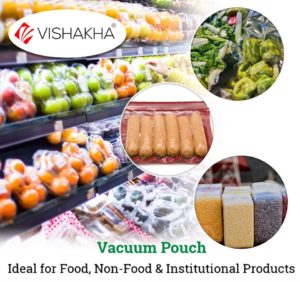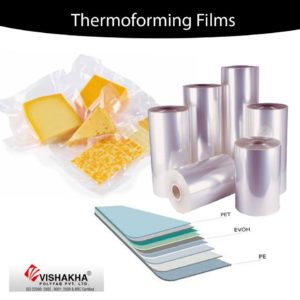Packaging refers to any material of any nature used for inhibition, safety, deliverance and conservation of goods from the producer to consumer and final users. Packaging materials may include aluminum foils, glass, plastic, steel or fiberboard/paper. Today there are numerous numbers of packaging materials which include Vacuum Pouches, Big Bag Liner, Inner Bulk Liner, Thermoforming Film, Top Lidding Film and Lamination Film.
Vacuum Pouches
Vacuum pouches are made from a combination of nylon and polythene which enables them to be high moisture barriers. Thus, they can be used for keeping ready food such as meat or fish and some medical products. Most people use them together with vacuum sealers but they can as well be used as normal bags since they are wholly water proof.

Big Bag Liner
Big bag liners on the other hand are made from woven polypropylene fabrics with webbed elating straps treated with ultraviolet and static inhibitors. These bags can accommodate both dry and semi moist materials such as foodstuff, Agrochemicals, cement and feeds. They are useful in the management of waste products thus providing a cleaner and healthier workplace. They also pose the materials to lesser damage risk compared to other flexible containers due to polythene liner which makes them moisture resistant. They have an enhanced appearance since they are white and clean which enables high quality printing of names and company logo thereby making a positive representation.
Inner Bulk Liners
Inner bulk liners are hermetically sealed giving them a stronger barrier against outside contaminants, moisture and even some pests. Their strong nature makes them dependable for maintaining freshness and good taste of the products for a long period of time. These bulk liners always offer consistency for safer stacking and safeguard of the packed products form hazardous conditions such as the conditions of the atmosphere and dust from sipping into the product.
Thermoforming Films
Thermoforming films are used to protect products with greater impact strength making them ideal for both food and non food products such as vegetables and dried fruits, dairy products and healthcare products. These films always have a strong mechanical property which makes them puncture resistant and leakage proof. They are also able to restrain strength at freezing temperatures and possess an excellent optical property for base forming films. They are available in various oxygen transmission rates which help in extending the shelf life of materials.

Top Lidding Films
Top Lidding films include dual oven able Lidding films, speciality Lidding films, breathable Lidding film and high barrier Lidding film. They are ideal for packaging food and non food products such as cheese, meat, poultry and marine products, bakery and healthcare products. These films are puncture resistant and provide an extended shelf life due to their wide range of oxygen transmission rates. They also have a quick sealing property for faster machines and increased output. Dual oven able film is best for packaging of frozen food or any product which requires heating in an oven or microwave since they are heat resistant. Specialty Lidding films are ideal for trays and cups because they are lucid, metalized and in retort able forms. High barrier is used to keep products safe from harmful bacteria while breathable Lidding films are used to control oxygen into the products.
Lamination Films
Lamination films on the other hand use an amalgamation of warmth and force to lamination board and the film used in the process is pre-coated on the base by extrusion outside layer. Boop thermal lamination films are best for write on or wipe off applications thus useful for making shopping bags and textbook covers. Polyester gloss laminating films on the other hand are used for dust coats and presentational folders.
